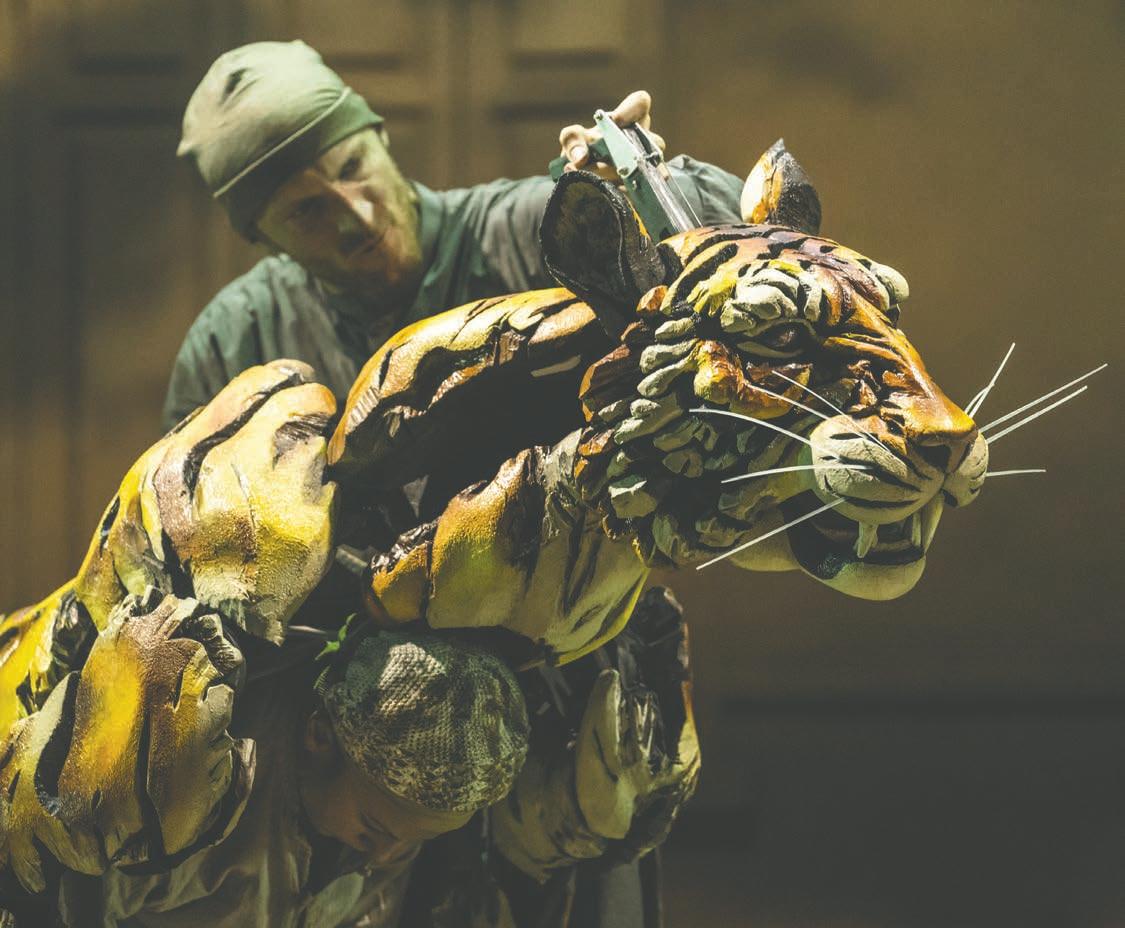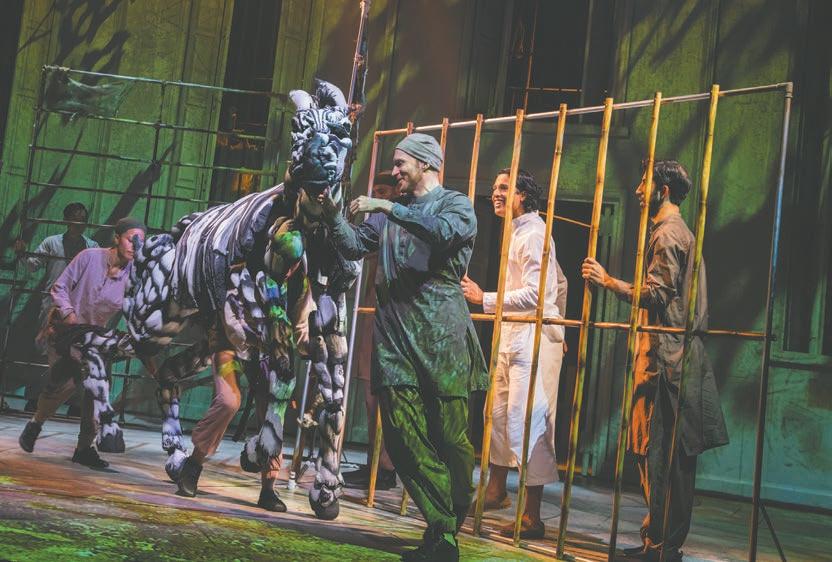
2 minute read
BRINGING THE SHOW TO LIFE Puppet director shares what it takes to make dreams a reality on Broadway
BY CHRISTY HINKO
The puppeteer, a person who manipulated an inanimate object, giving the illusion that the puppet is very much alive, is full of creativity and expression. Blvd. had a chance to speak with Finn Caldwell, the puppet designer and movement director for the upcoming screenplay adaptation of Life of Pi on Broadway on March 12.
Advertisement
Puppets come in many shapes, sizes and forms like as a human or legendary creature. In this case, Caldwell, his co-creator Nick Barnes and a team of a couple dozen people, are charging with bringing the show to life with their interpretation of Richard Parker, the real-to-size Bengal tiger that shares the stage with the human character, Pi.

The Process “Me and Nick, together, we design and build the prototypes,” Caldwell says. “From that prototype, we go into a research and development phase with performers. In this case, we made a tiger prototype, just to see if tigers work.”
Caldwell and Barnes respond to and adjust their design based on how the actors are able to move and manipulate the test puppet.
“We do a more substantial design that goes into CAD [2D and 3D computer-aided design software],” Caldwell says. “The designs are realized by a team of 10 to 20 designers that Nick manages.”

The Puppets “One of the first parameters that we take into consideration is weight,” Caldwell says. “The tiger puppet is huge and is the size of a tiger, but it obviously cannot weigh what a real tiger weighs.”
He adds, “We came to the decision that we wanted it to look like driftwood, flotsam and jetsam from the sea, reclaimed sea salvaged wood, and that obviously would be incredibly heavy, so we needed to find a material that allowed us to make it look like it had bulk and muscle and that it had more weight than it actually did.”
Caldwell said that to create Richard Parker, they ended up using Plastazote, a modern kind of foam plastic. The internal structure of the tiger puppet is made from wood and bungee, allowing the tiger skeleton to move in an organic way.
What Inspires You
Caldwell began his career as a performer. His first show was in national tour of War Horse from London. He continued with the show in the West End, New York, Australia, New Zealand and also in Denmark. War Horse wasn’t mine, I was just a performer and the director of puppetry,” Caldwell says. “That is when I started building my own puppets.” Live-scale animals have become his specialty. His first puppet, ambitiously, was a lifesized elephant.
REALIZING THE CREATION
“I read the story and I think ‘what image is coming into my mind as I read this and how does this image further the story. how does this image inform that audience of what’s happening here’,” Caldwell says.
“There is a part in the show where the boy realizes that he has no choice but to make a go of not fighting the tiger but teaching it to stay in one half of the boat. so that is a tough physical sequence.
“We might [instruct] it as ‘tiger gets in the boat. tiger advances toward the boy. boy see PUPPETEERS on page 10B



















